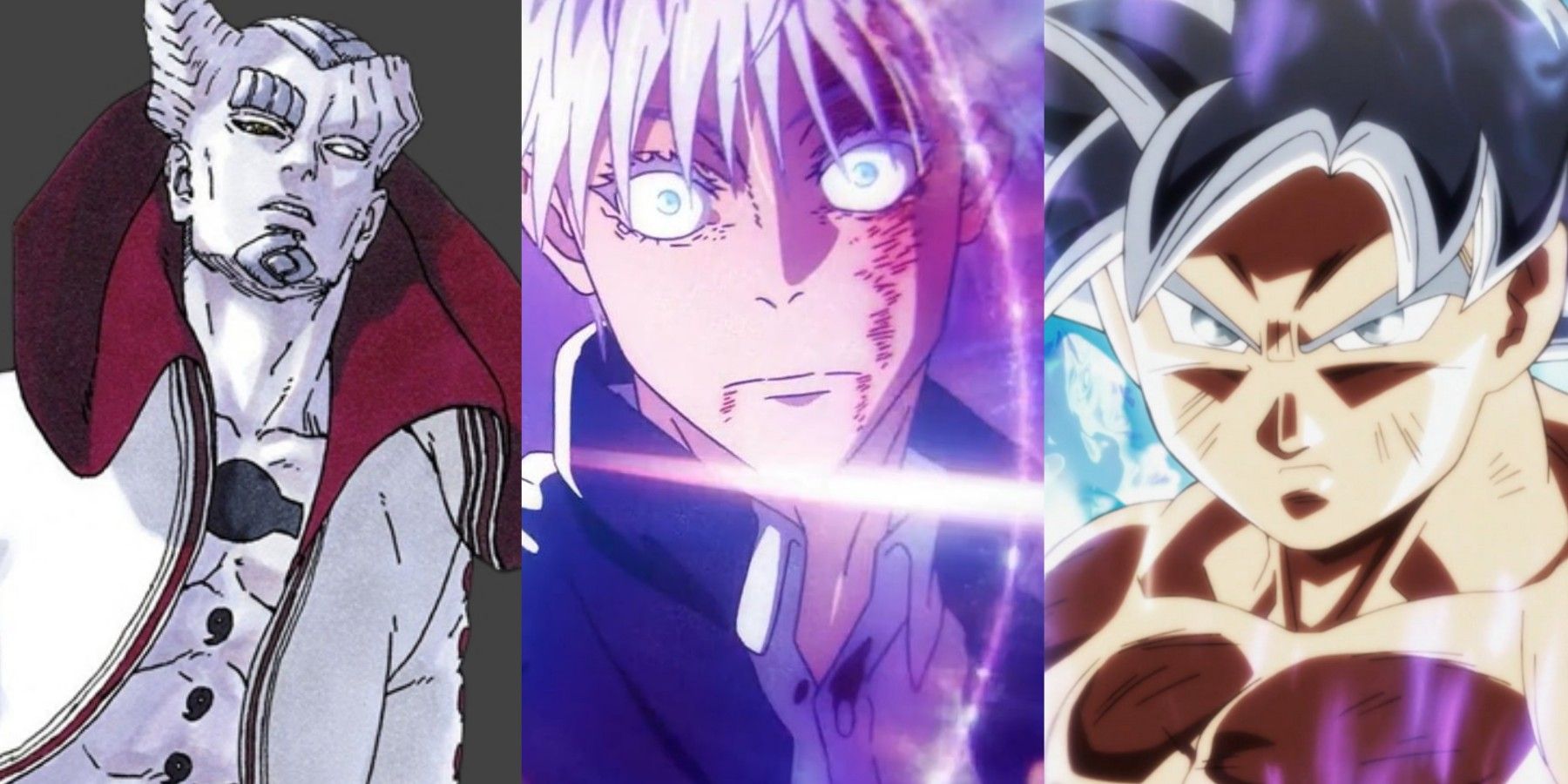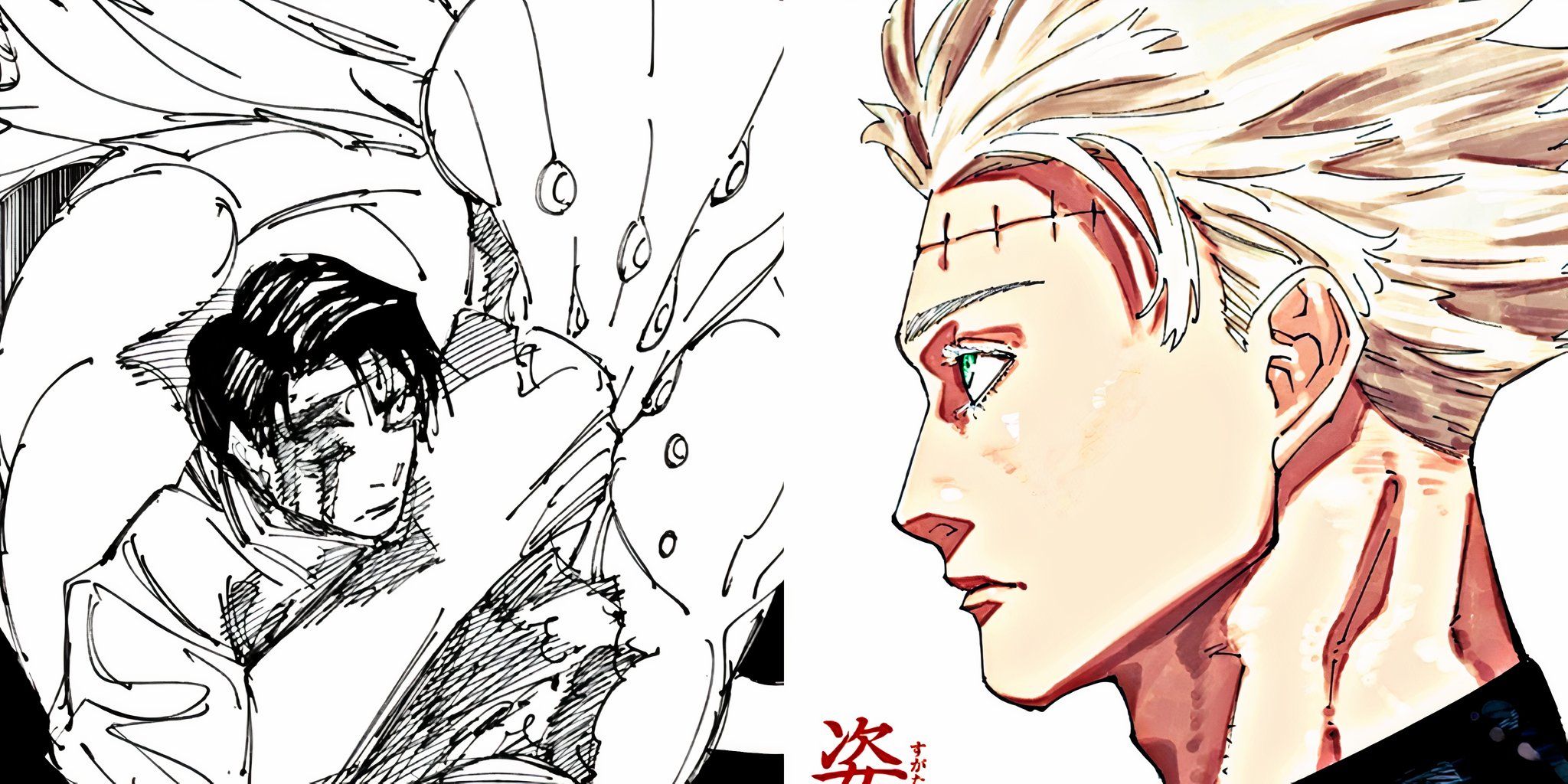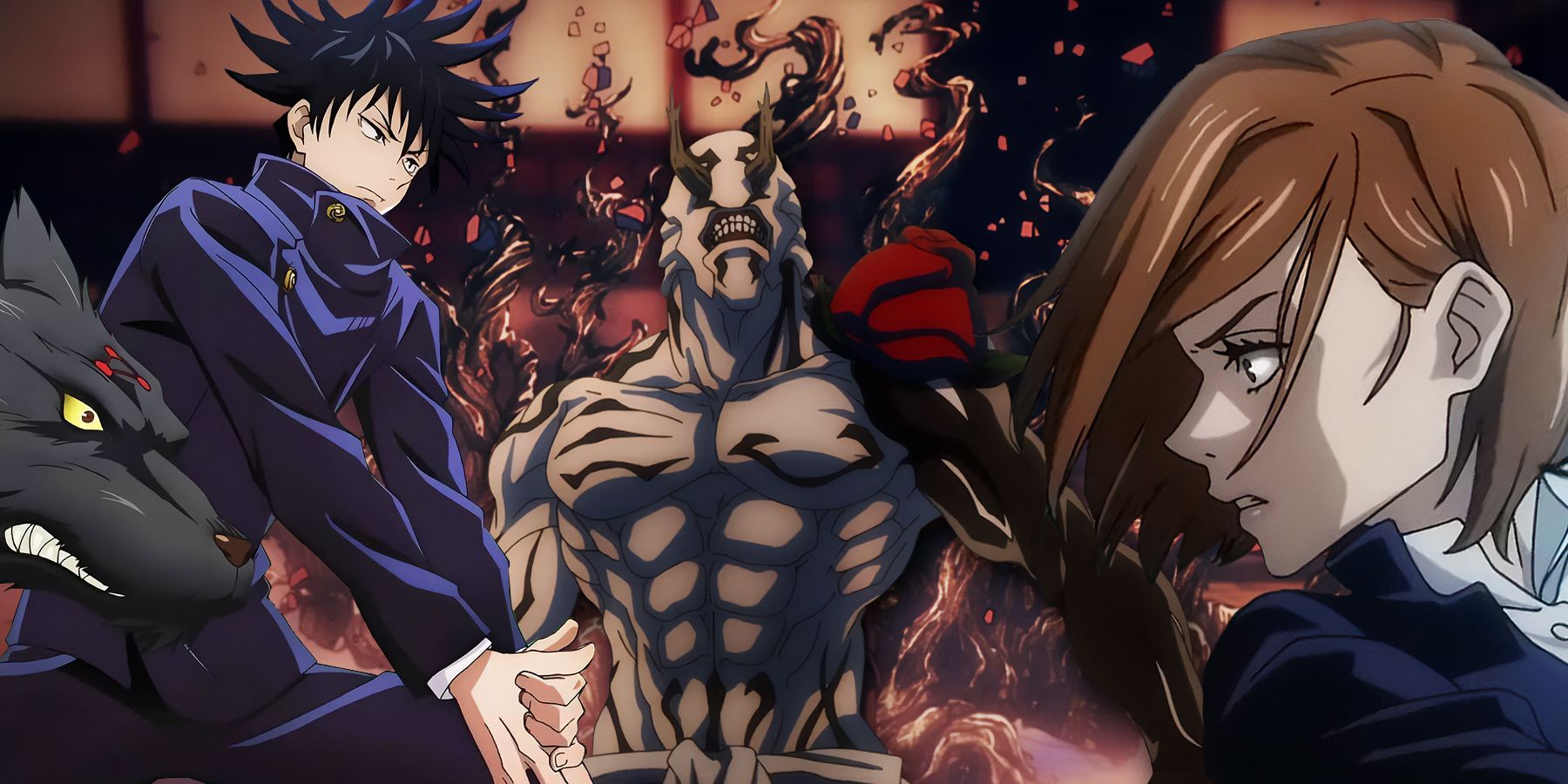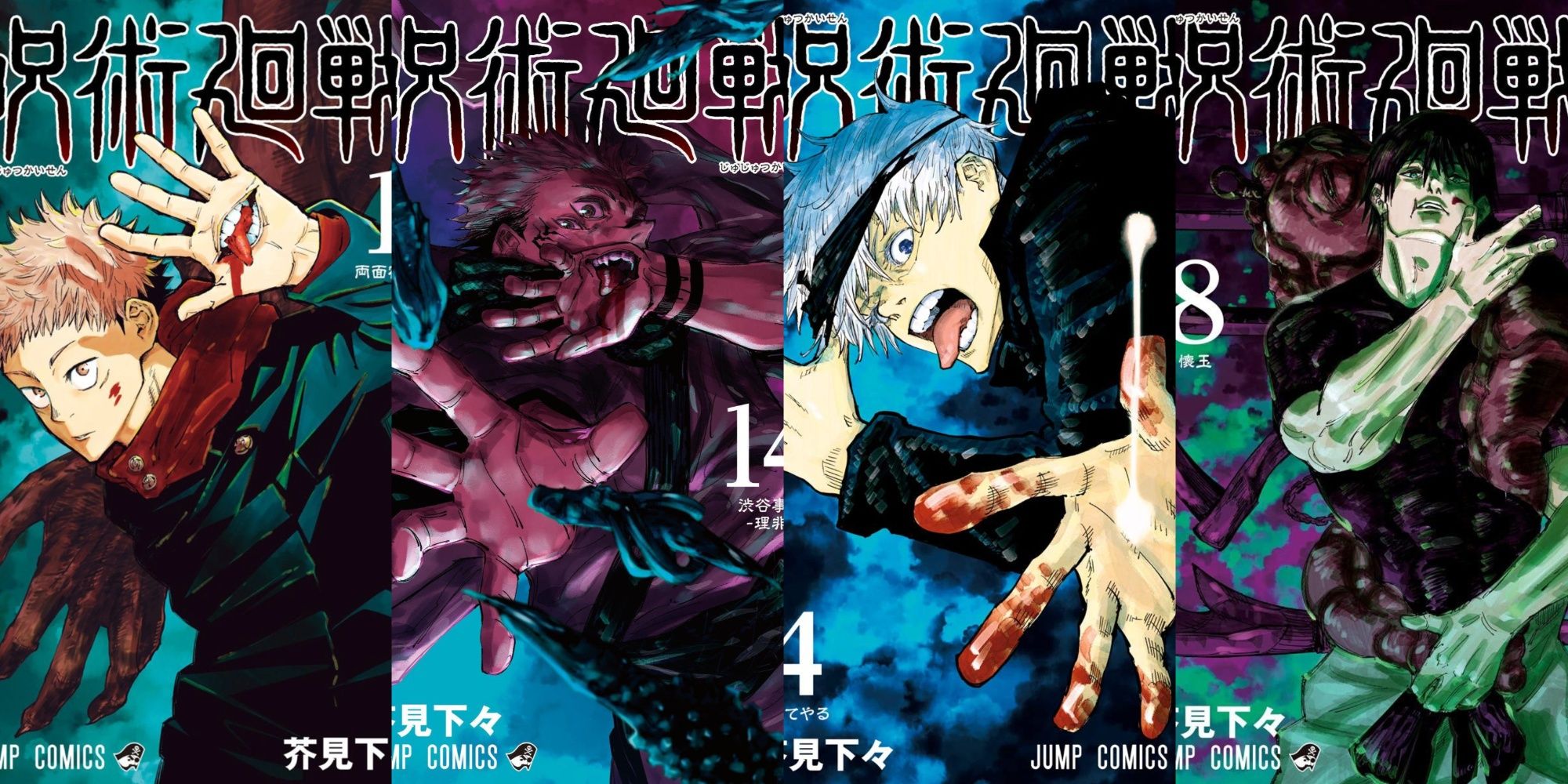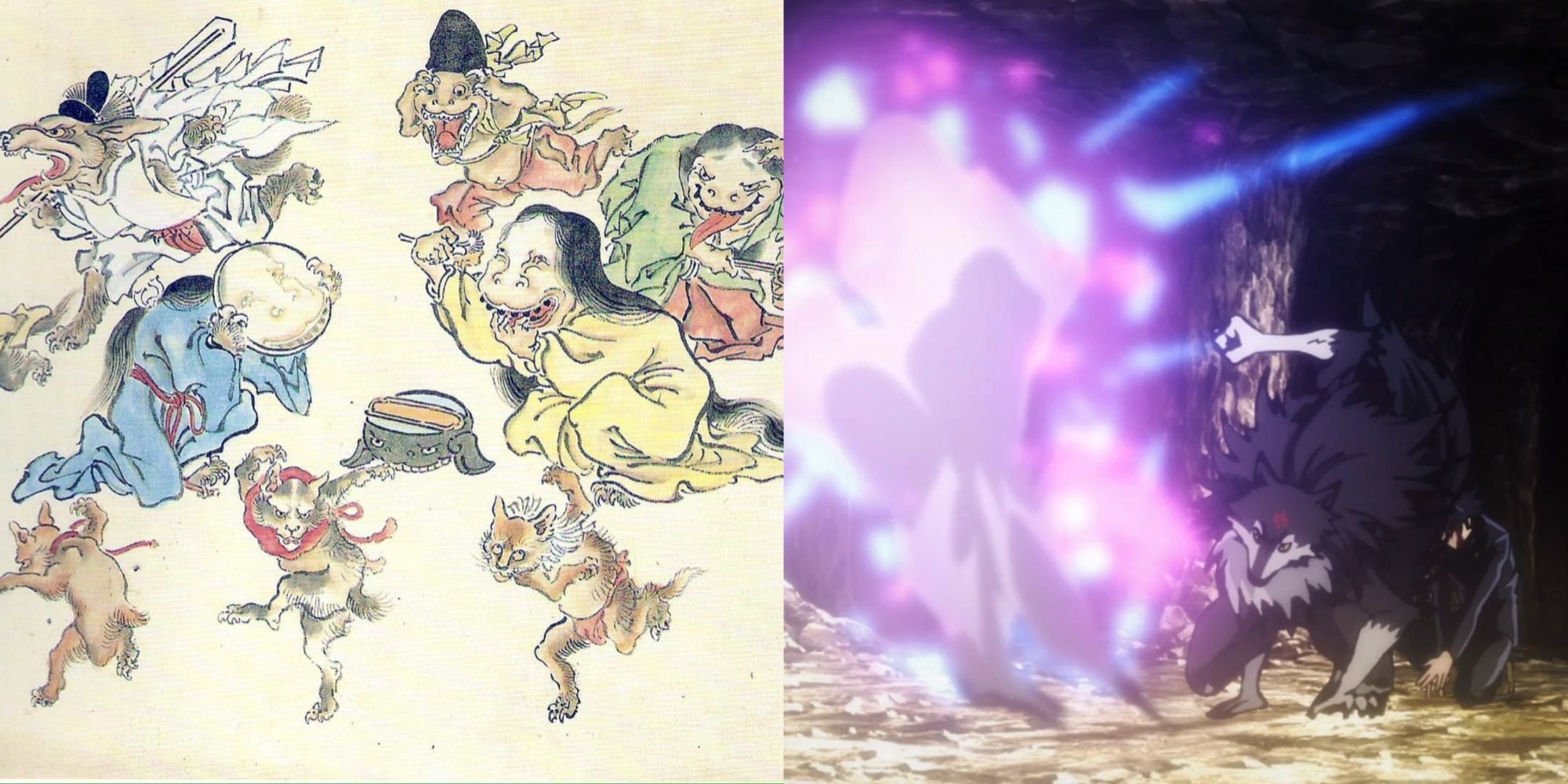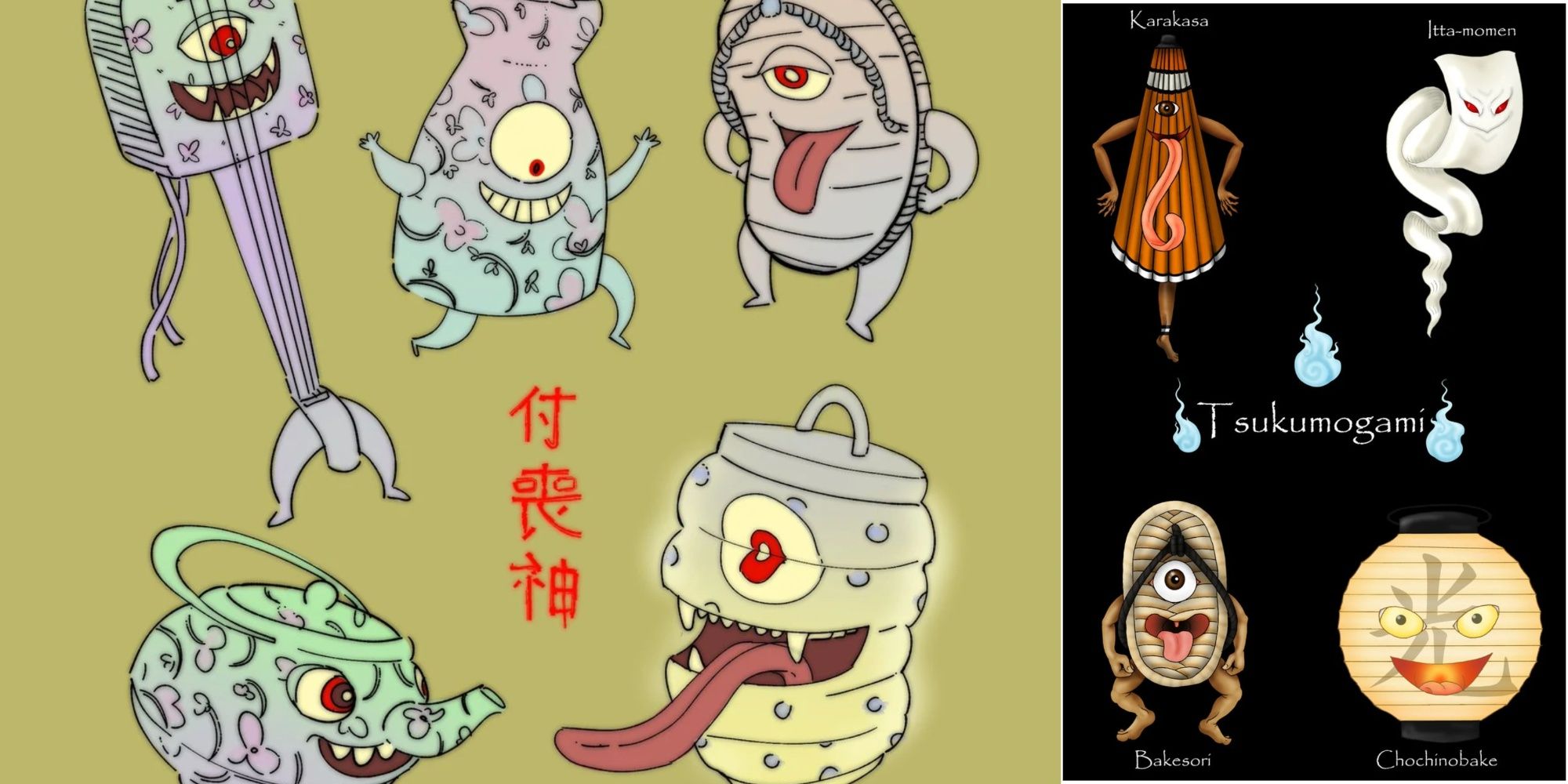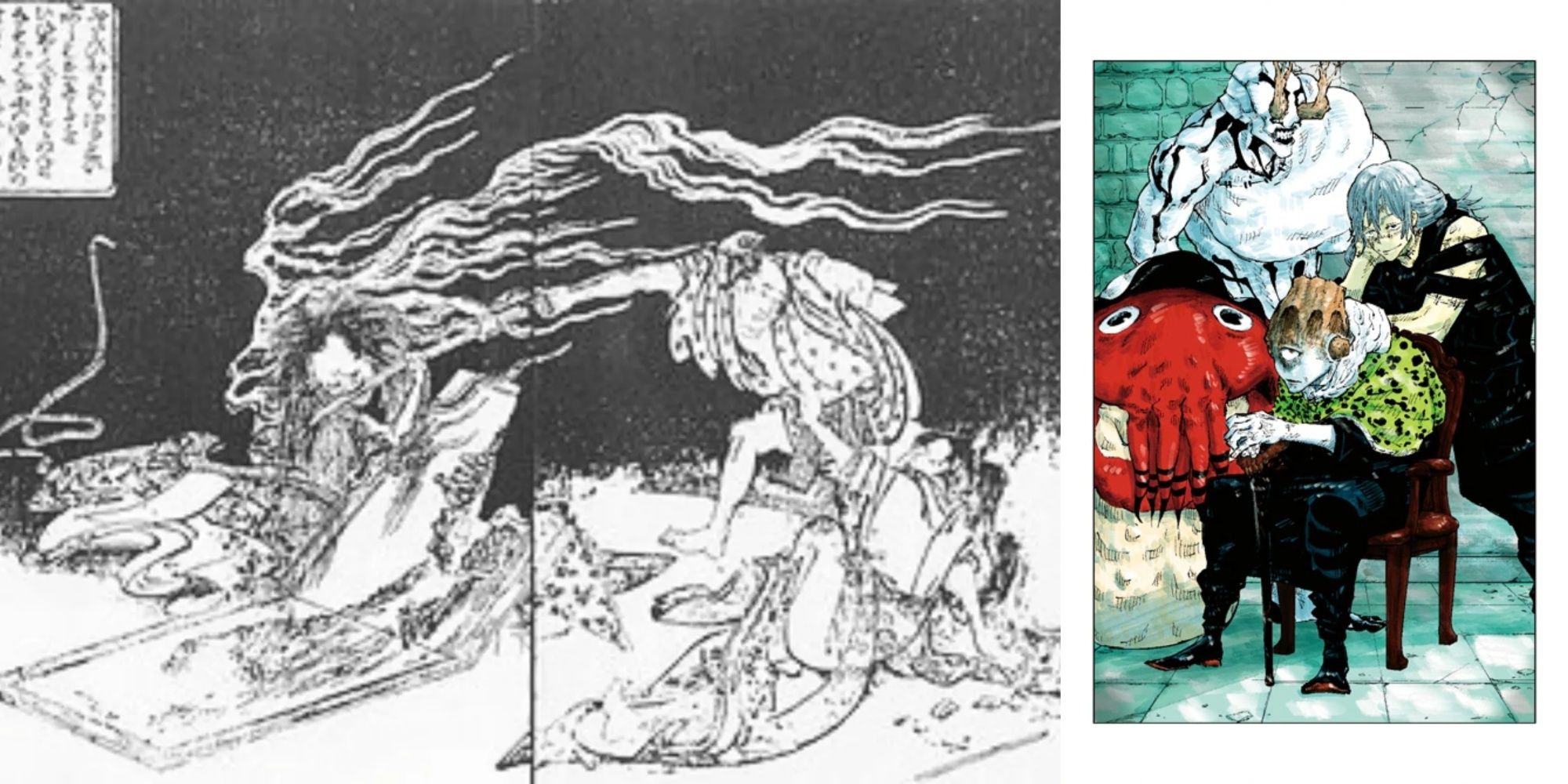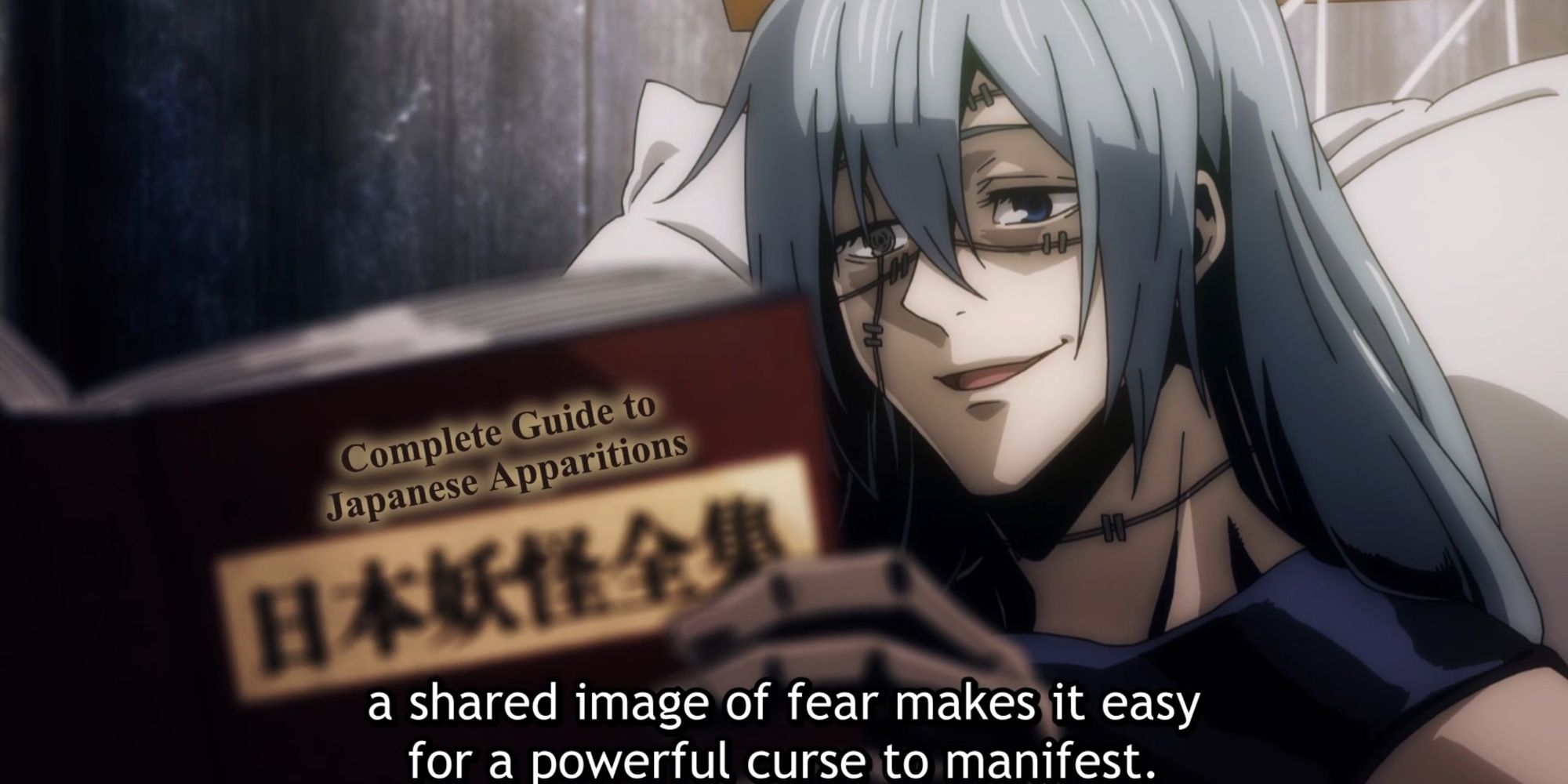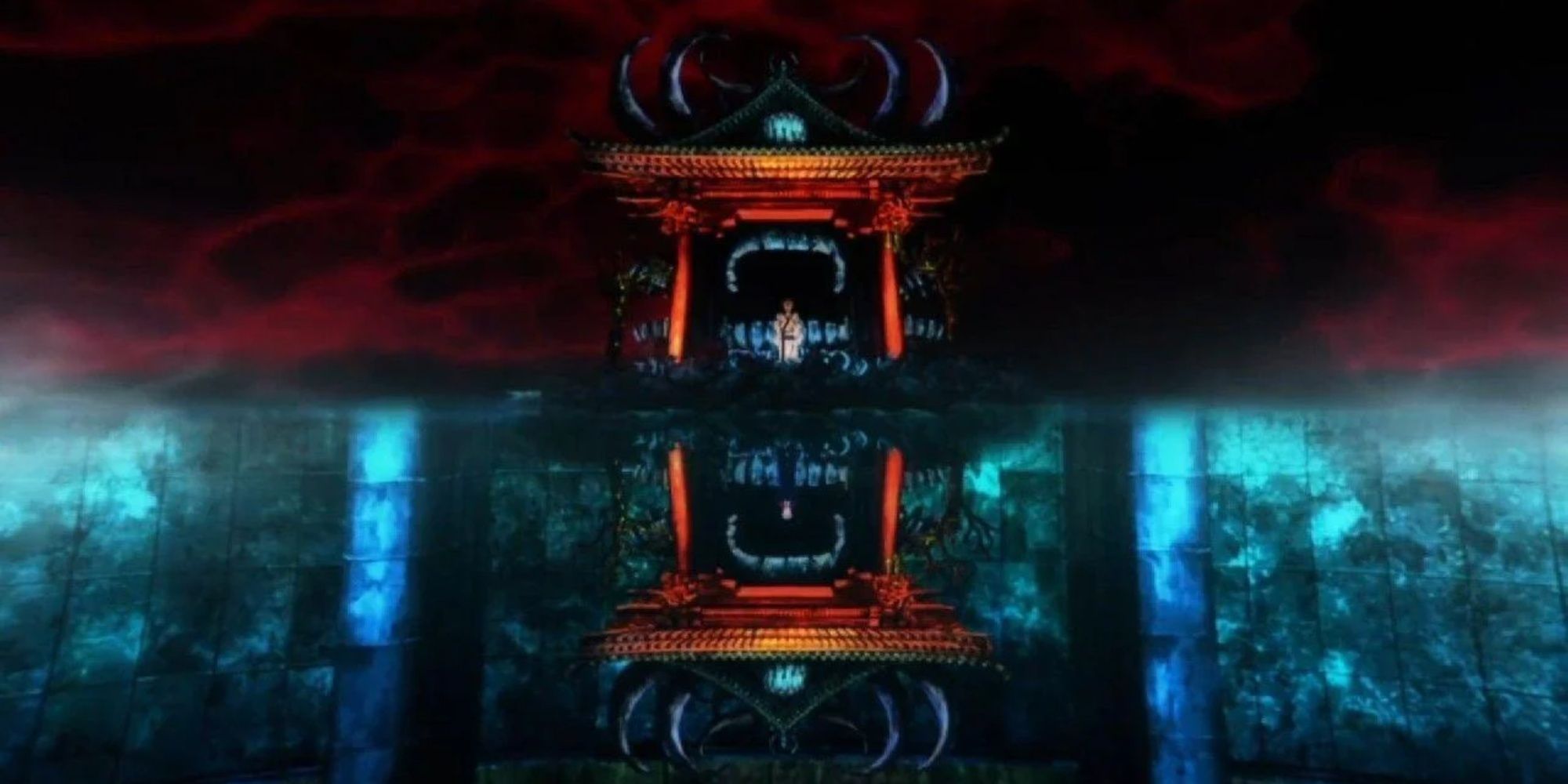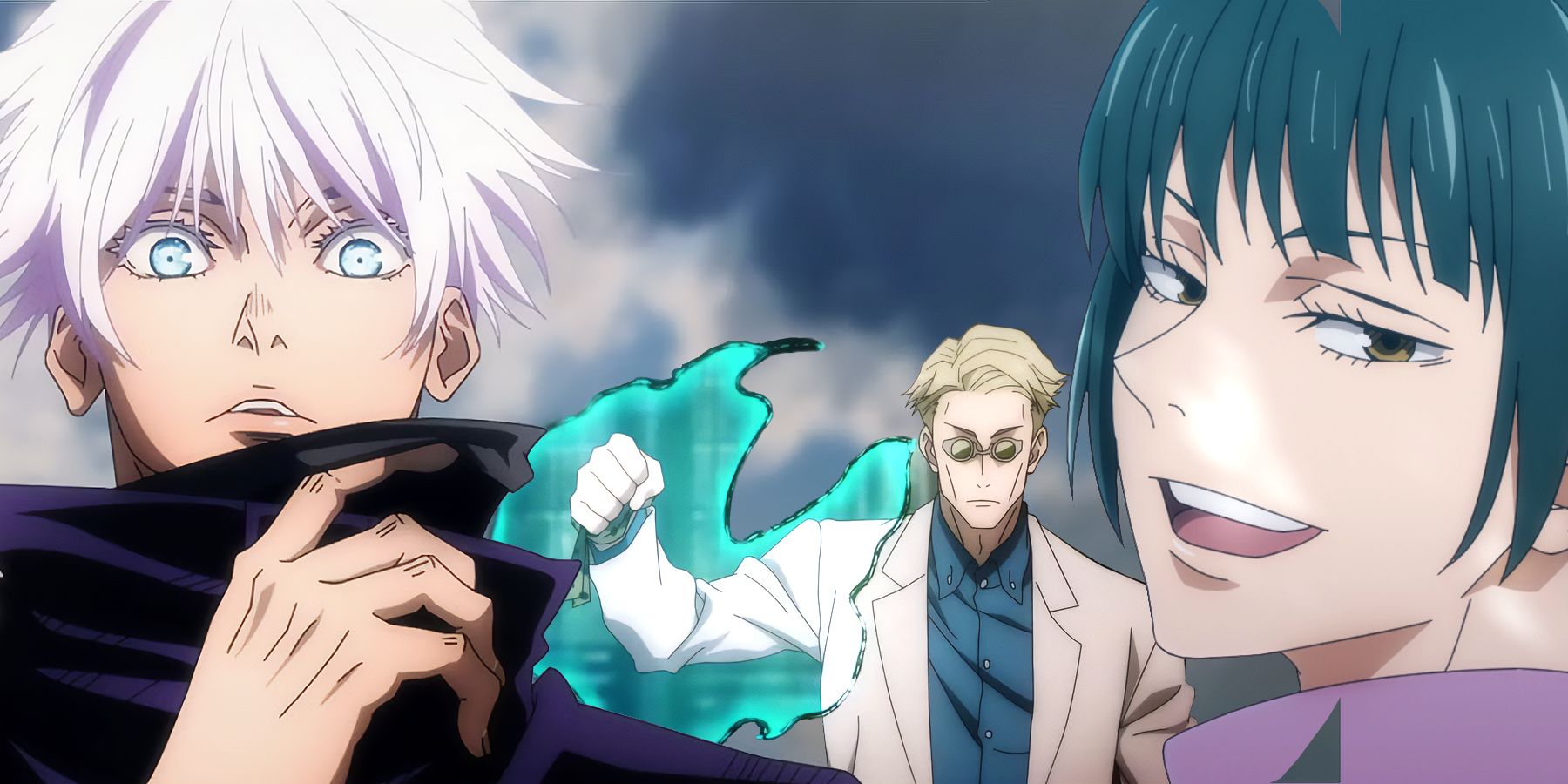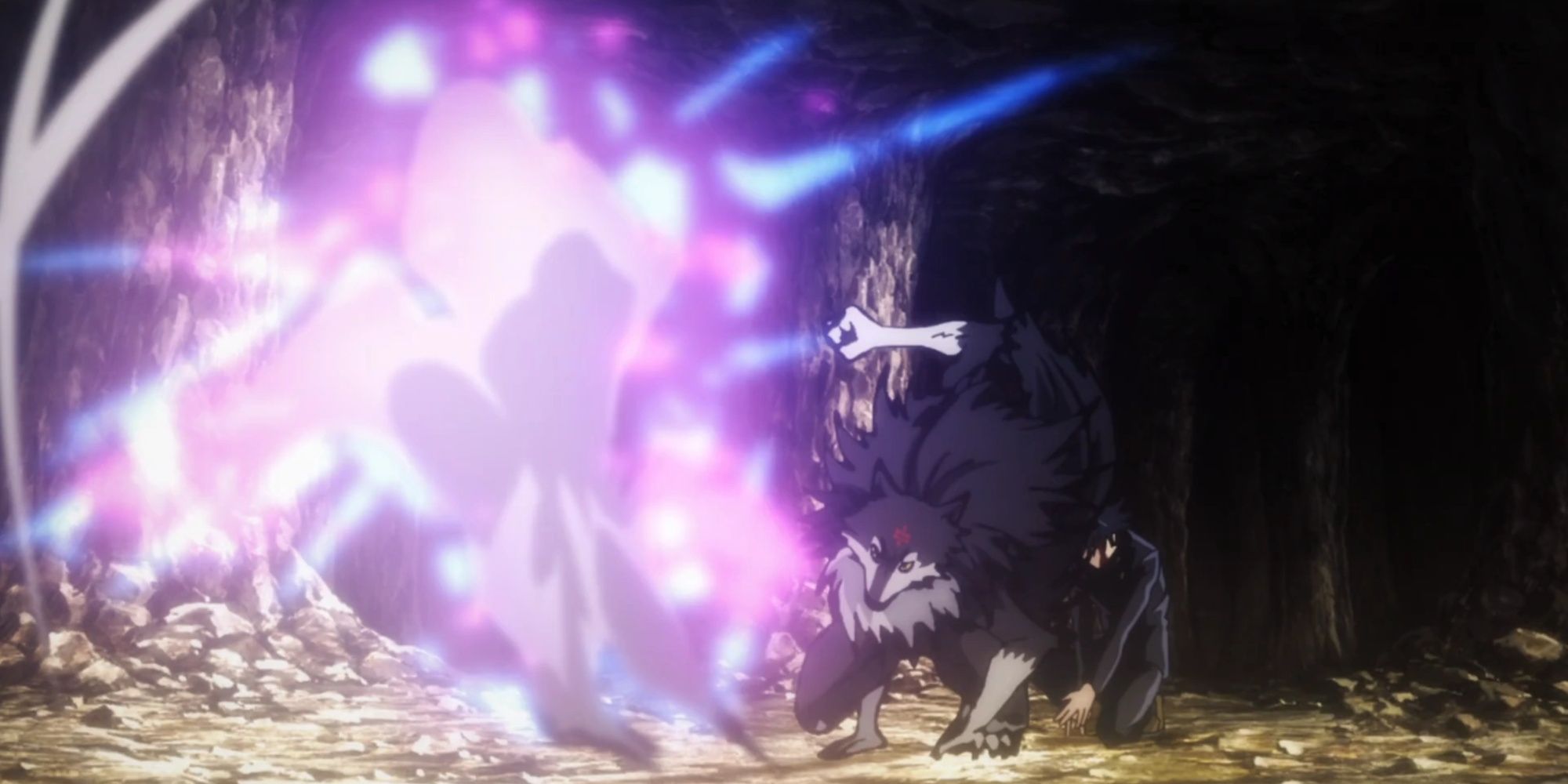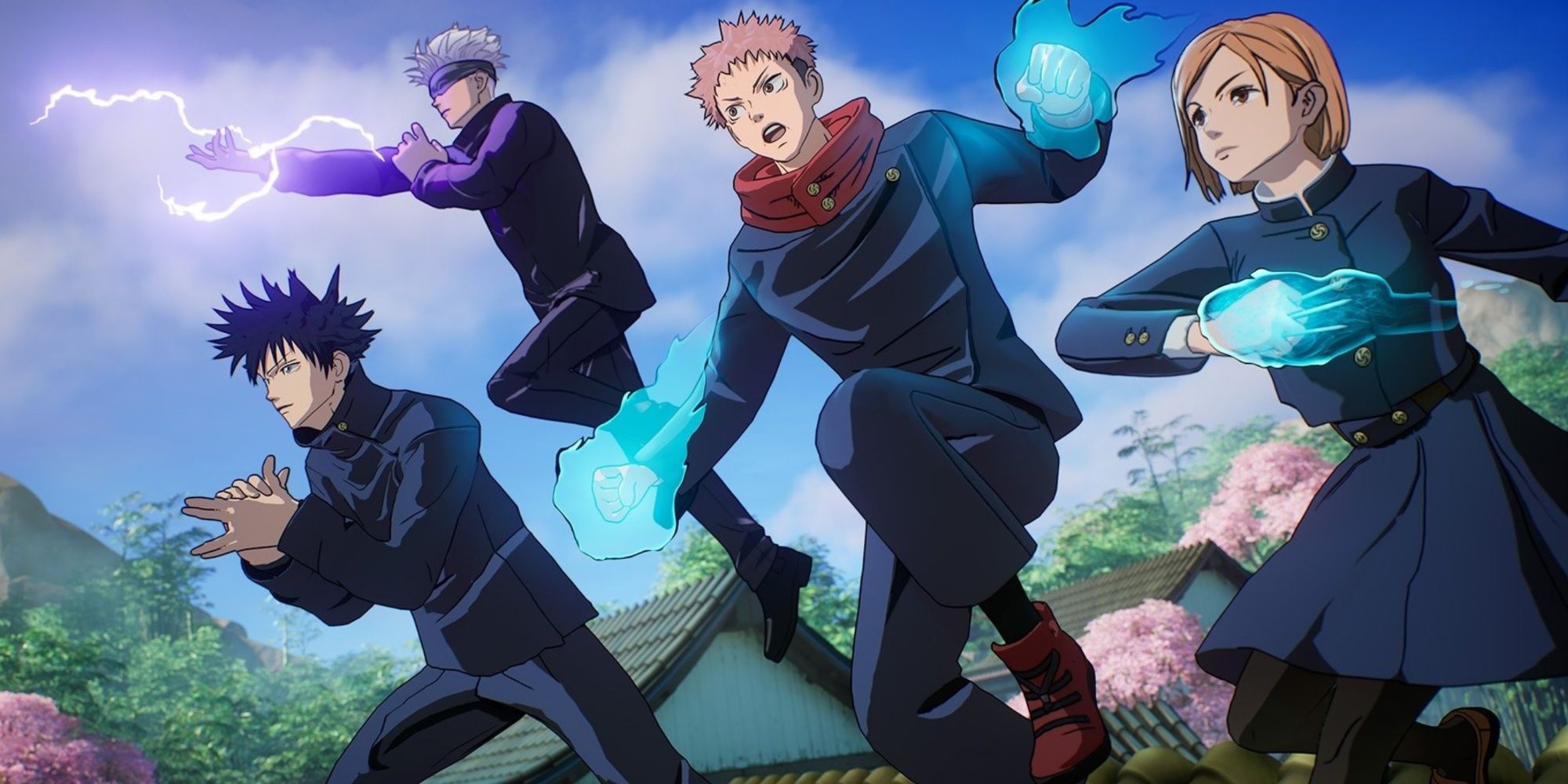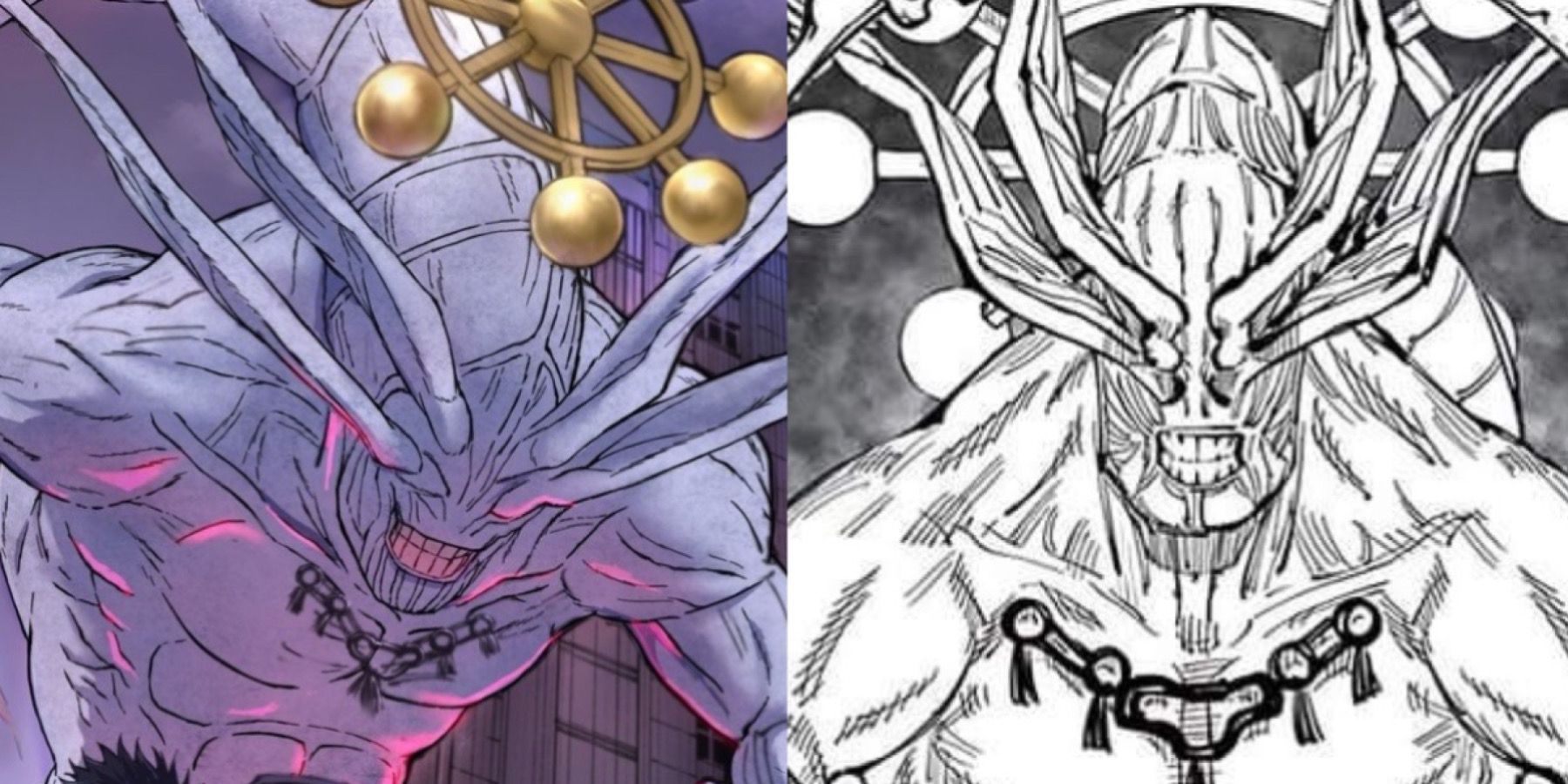Jujutsu Kaisen goes beyond fiction by effortlessly incorporating real-world mythology into its magical tapestry. The series offers a dynamic study of curses, sorcery, and the unknown, drawing inspiration from a wide range of cultural myths and stories.This fusion not only adds richness to the story, but also grounds its magical aspects in the accessible foundations of human storytelling.
Jujutsu Kaisen creates a universe that resonates with both its characters and readers by combining ancient tales and beliefs, demonstrating mythology's ongoing power in molding audiences views of the mysterious and unusual.
9 Yokai Influences
Jujutsu Kaisen primarily references Japanese folklore and mythology, particularly the domain of yokai. These otherworldly entities, which range from mischievous spirits to malignant demons, provide cultural complexity and mystery to the story. Characters like as Sukuna and Mahito embody classic yokai traits, while afflicted spirits take on a variety of shapes.
The use of onmyodo and jujutsu methods blends yokai legend with modern urban fantasy, providing an enthralling blend of traditional and contemporary themes. Jujutsu Kaisen's use of yokai inspirations adds complexity to the story, creating a vibrant universe where ancient stories meet current struggles.
8 Tsukumogami
In Jujutsu Kaisen, the concept of Tsukumogami, or ancient artifacts gaining consciousness, adds another element of mystery. Cursed objects, such as Ryoumen Sukuna's fingers and Yuji Itadori's amulet, are essentially tsukumogami, encapsulating their owners' aspirations and memories. These relics connect the human and supernatural worlds, exemplifying the series' combination of traditional Japanese folklore and modern urban fantasy.
Jujutsu Kaisen dives deeper into the delicate relationship between humankind and the supernatural by introducing tsukumogami, enhancing its storyline with a sense of history and spiritual significance.
7 Onryō Spirits
Jujutsu Kaisen incorporates the terrifying concept of Onryō spirits into its plot. These malevolent apparitions, propelled by strong grudges, elicit both dread and sympathy. Yuji Itadori's relationship with the Onryō spirit of Sukuna exemplifies this dynamic, since his struggle for control resembles the classic Onryō narrative.
The series expertly combines Japanese ghost tradition with modern horror, giving these spirits a chilling reality. Jujutsu Kaisen goes into the depths of human emotions and tragedies by introducing Onryō, adding a frightening dimension to an already rich tapestry of supernatural aspects.
6 Urban Legends
Jujutsu Kaisen builds a compelling story by incorporating urban legends into its ghostly universe. Hanako-san and the Cursed Womb: Death Paintings, for example, blur the barrier between reality and the otherworldly. The series explores contemporary fears and cultural intrigue by adding urban tales, generating a sense of familiarity and unease.
These legends define the Jujutsu Sorcerers' struggles against cursed spirits and inspire character motivations. Jujutsu Kaisen not only pays respect to real-world urban legends, but also bridges the gap between the everyday and the supernatural, complementing its tale with an uncanny modernism.
5 Cultural Crossroads
By fusing ancient Japanese ideas with modern metropolitan settings, Jujutsu Kaisen effectively navigates cultural crossroads. The series successfully combines yokai folklore, Shinto ceremonies, and Buddhist beliefs with modern city life. It depicts the junction of age-old traditions and contemporary mindsets through characters such as Yuji Itadori and Satoru Gojo.
This integration adds complexity and significance to the story, creating a vibrant world where old mysticism coexists with modern difficulties. Jujutsu Kaisen transcends genres by embracing cultural intersections, giving a riveting investigation of how varied beliefs and practices interact and influence one another in a world where the supernatural is both ancient and immediate.
4 Symbolism and Archetypes
The symbolism and archetypes in Jujutsu Kaisen lend dimension to the characters and topics. Yuji's hero's journey, embodying resilience and growth, contrasted with Sukuna's depiction of a classic, evil demon archetype. With his blindfold and great power, Satoru Gojo represents hidden potential and the blurring of light and dark. Cursed spirits can reflect psychological instability and emotional worries.
The cursed techniques of the series, which are based on cultural symbolism, form the characters' identities and tribulations. Jujutsu Kaisen becomes a tapestry of universal and cultural symbolism by weaving these themes together, guiding characters through transformative arcs while increasing its examination of human nature and the supernatural.
3 Curse Removal Rituals
In Jujutsu Kaisen, curse removal rituals are extremely important. Jujutsu Sorcerers use old traditions to exorcise cursed demons that plague the modern world. These Shinto and Buddhist-inspired rites emphasize purity and equilibrium. Characters such as Yuji Itadori use these ceremonies to clear cursed goods, showing the balance between the spiritual and modern worlds.
Ritualistic elements, such as drawing seals and reciting spells, combine cultural iconography with urban fantasy, creating an intriguing juxtaposition. The series emphasizes the constant conflict between darkness and light through curse removal rituals, as characters bridge the mysterious past with the concerns of the present.
2 Cultural Context
The cultural context in Jujutsu Kaisen is crucial, as it blends Japan's rich folklore, rituals, and belief systems with a modern backdrop. The series incorporates yokai folklore, Shinto rites, and onmyodo techniques to create a tapestry in which tradition and modern life coexist. Characters' problems and motivations are steeped in cultural values, adding depth and resonance to the story.
This combination of past and present adds levels of realism, imbuing the story with a feeling of history and spirituality. Jujutsu Kaisen captivates not just with its otherworldly conflicts, but also with its investigation of the delicate relationship between tradition and the modern world by incorporating cultural background.
1 Mythological Inspiration in Characters
Jujutsu Kaisen is inspired by ancient lore, infusing characters with enthralling connections to legendary individuals. Sukuna, like traditional yokai, displays malevolence and cunning, mirroring the concept of powerful demons. With his blindfold and great power, Satoru Gojo invokes archetypes of seers and enlightened people. Yuji Itadori's role as Sukuna's vessel matches the myth of possessing spirits. Shikigami is a spiritual summoning technique used by Megumi Fushiguro.
These mythical inspirations deepen character dynamics and arcs, allowing for a seamless blend of old legends and modern difficulties. By doing so, Jujutsu Kaisen creates a world in which the legendary and the human merge in fascinating ways.

